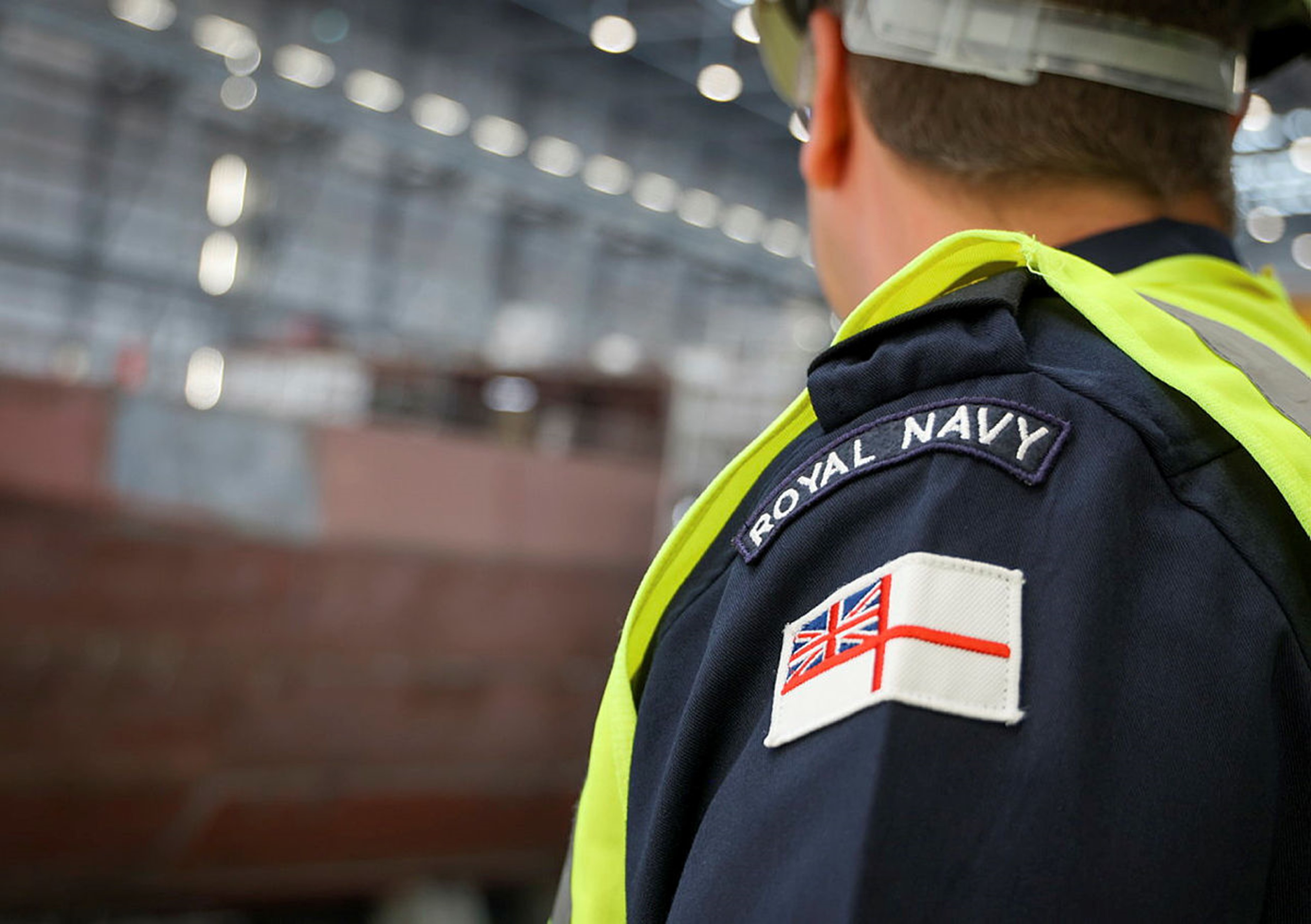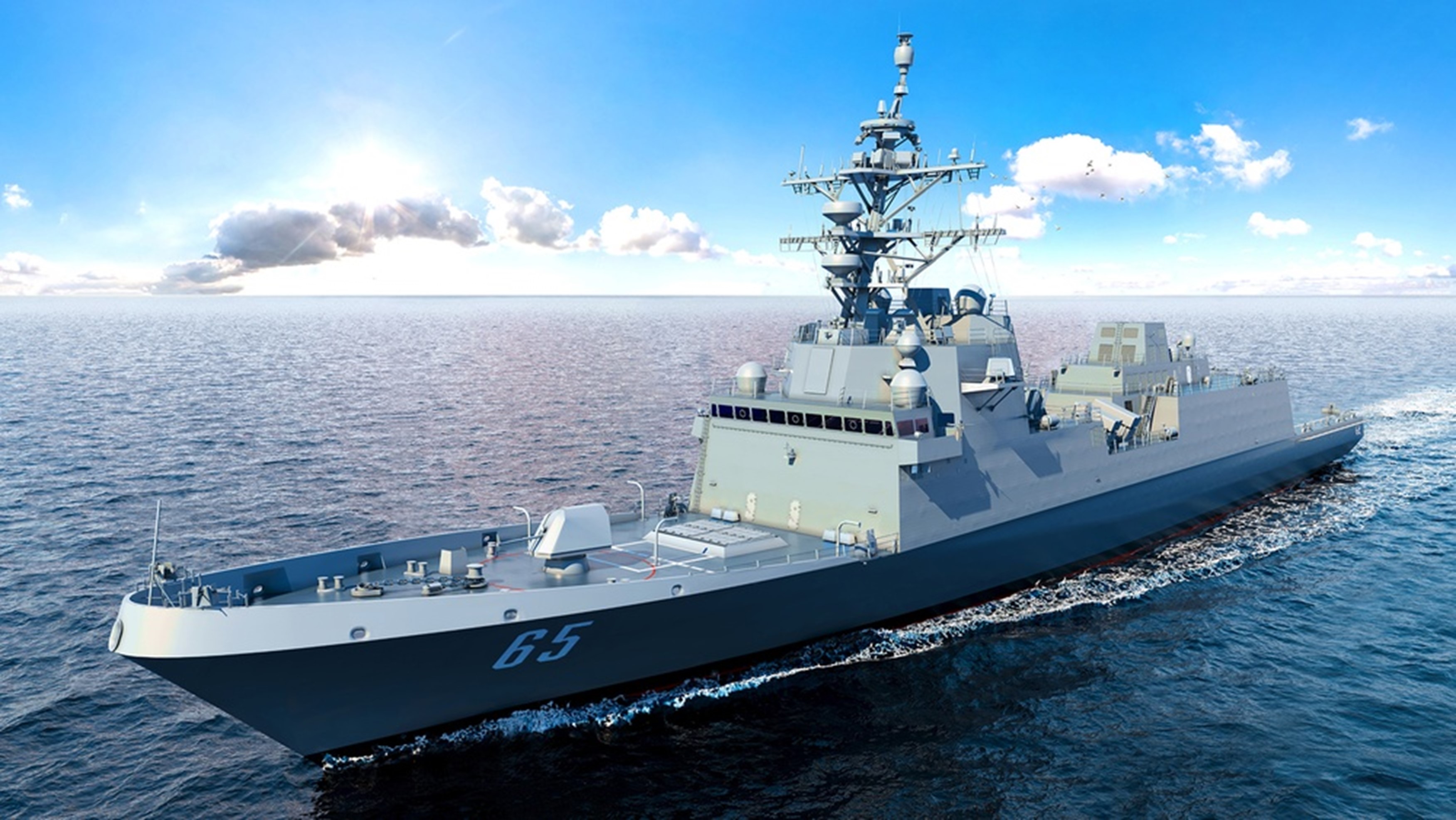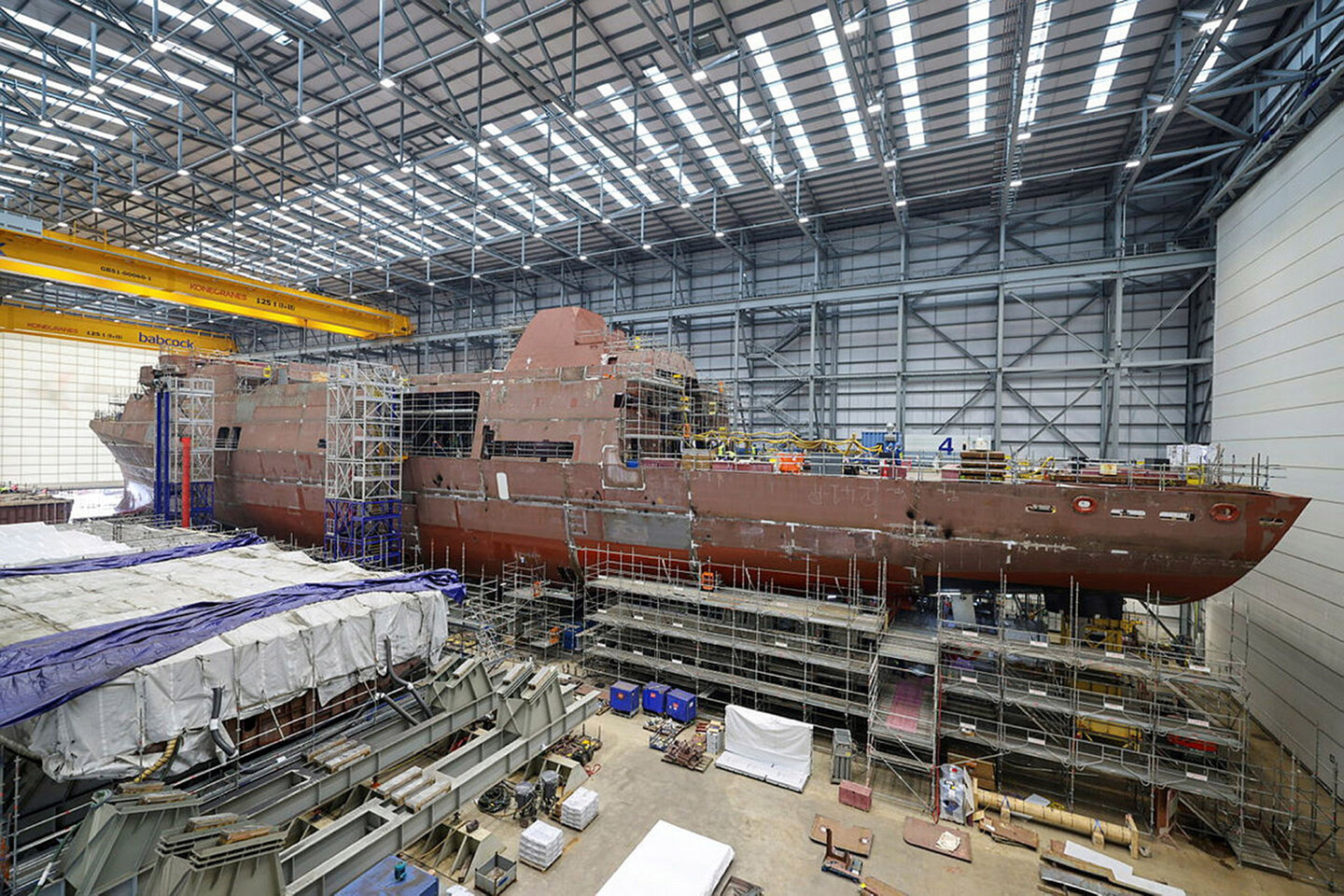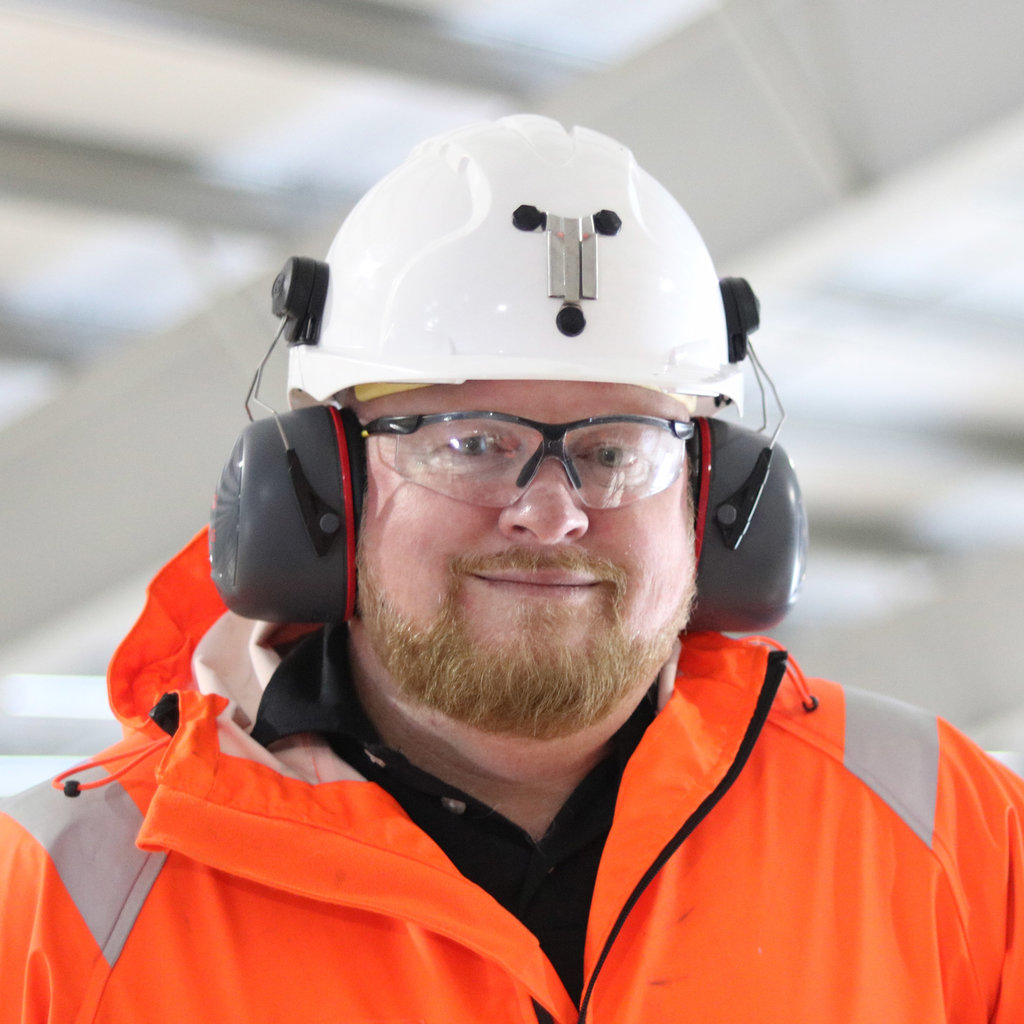Feature
Frigate focus: improvise, adapt, overcome
Uncertain threats and requirements have cut short efforts to future-proof ships; now the naval sector must adapt to survive. John Hill reports.

A UK Type 31 frigate in build at Rosyth. Credit: Crown copyright / UK Ministry of Defence
The return to great power competition has restored the pursuit of supremacy at sea. In December 2024, Finland intercepted what is believed to be a Russian ship from its so-called ‘shadow fleet’, the dubious vessel suspected to have sabotaged a subsea cable in the Baltic Sea connecting Finland and Estonia.
In the Red Sea, Operation Prosperity Guardian has largely kept Houthi strikes at bay, maintaining some semblance of security in allowing international trade to flow through the chokepoint that is the Suez Canal.
After decades of Western counterinsurgency operations, maritime strategy is back on the map. Securing one’s interests and influence requires a large and healthy surface fleet to perform a variety of roles: from anti-access, air denial (A2AD), anti-surface warfare (ASuW), anti-submarine warfare (ASW), and accommodating uncrewed autonomous systems.
But despite the new strategic context, there are still questions that have yet to be answered when it comes to designing future surface combatants. It is certain, though, that warships are being developed with more capabilities to keep pace with emerging threats. This requires a mentality for futureproofing and some degree of speculation at potential future requirements.
Speaking about naval warship design, Andy Kimber, chief naval architect for Surface Ship Design at BMT, said that a lot of the delays experienced in shipbuilding can often be attributed to a lack of understanding with the requirements set, or heading off in a “slightly wrong direction” before having to correct.
“Successful programmes are ones where there is a clarity of purpose and a clear understanding of how to deliver that programme. For naval programmes, that’s often hard to achieve because things change both in the military sphere but also in the political sphere,” Kimber commented.
Analysis by GlobalData puts the frigate as the leading segment in the ‘Naval Vessels and Surface Combatants Market’ over the coming decade, accounting for a 27.4% revenue share of the total market over the forecast period. This is followed by destroyers (22.5%) and auxiliary vessels (13.5%).
The frigate, a jack of all trades, seeks to provide capability across a range of areas, plying their trade across a multitude of roles. In assessing future ship design, both the US Navy’s Constellation-class and the UK Royal Navy’s Type 31 frigate programmes best discern the issues at play.
Frigate designs: Constellation
The Constellation-class (FFG-62) is based on the Italian and French FREMM frigate design. In 2024, the US Navy and shipbuilder Marinette Marine modified an existing FREMM design to incorporate US specifications and weapon systems.
However, the US Navy’s decision to begin construction of the first FFG-62 before the design was complete was found to be inconsistent with leading ship design practices and jeopardised this approach, according to the US Government Accountability Office (GAO).
Furthermore, design instability caused substantial weight growth: while the European FREMM has a displacement of 6,000 tonnes, the Constellationexceeded this, adding another 1,500 tonnes.

Graphic rendering of a future US Navy Constellation-class frigate. Credit: US DoD
The Constellation programme is now facing a three-year delay due to the incomplete design, leading to the first-of-class frigate reaching a “standstill” in construction, according to the GAO.
The larger American design could further change over time, leading to cost growth and more work as units, in the initial batch of ten of a total of 20 vessels, are produced to different specifications. It is thought that the early Constellation units may even be relegated to the role of “trial ships” by the US Navy – a grim prospect it would share with the programme’s predecessor, the Littoral Combat Ship.
Frigate designs: Type 31
It appears that part of the problem with finding the right direction of future frigate design is that navies must adapt to reality. The Royal Navy’s Type 31 programme – comprising five multi-purpose ships to replace roles undertaken by Type 23 frigates and Batch 2 River-class offshore patrol vessels – has taken a similar approach to the Constellation development.
However, the UK mindset is different: the UK Ministry of Defence (MoD) expects to adapt its ships in batches with slightly different specifications as the threat landscape and requirements change.
This unique mentality – accepting a self-evident truth that change is constant – prizes delivery over exquisite ships.
Aligning with the MoD’s Integrated Procurement Model, Type 31 follows a stringent policy of ‘spiral’ development. Now almost a year old, this guideline places emphasis on delivering a minimum deployable capability quickly, and then iterating it in the light of experience and advances in technology rather than waiting for a 100% solution that may be too late and out of date.
This may be where the next-generation Type 32 frigate enters the framework. The MoD recently gave a nod to plans for the future vessel, albeit the platform remains in the conceptual stage.
Next steps for Type 32 will likely follow the spiral method, wherein the batch follows the same modular Type 31 model but with different, emerging capabilities.

Type 31 frigate, HMS Venturer, in build. Credit: Crown copyright / UK Ministry of Defence
The government has hinted that the platform may support the use of uncrewed systems, for example, embarking them around the world. This remains one of the many gaps in a navy starved of capabilities but remains adamant that the service retains a global reach.
This prospect is still uncertain, though, especially since Rolls-Royce will provide its Mission Handling System for all eight Type 26 frigates, which will take on a more combative role than Type 31.
Similarly, in May 2023, the service decided that Type 31, originally envisaged as light patrol platforms, were to be fitted with the Lockheed Martin Mk 41 vertical launch system (VLS) offered the prospect of a significant capability increase through a wider range of anti-ship and anti-air missiles.
Despite the Royal Navy’s assessment phase with the US Navy and industry to explore options and costs associated with fitting the VLS, industry officials at Babcock, an authority for the Type 31 programme, stated that it was imperative the vessels were delivered on time to the service.
Kimber, whose career has covered both design and in-service support activities for legacy Type 22 frigates and Type 42 destroyers, through to working on the design of the Queen Elizabeth-class aircraft carriers, stated:
“I think in the UK, we're much more used to the military and industry working together to deliver solutions. It’s very interesting to work in an environment where you have much more ownership, control, and ability to innovate with the solutions.
“Within the [Royal] Navy, we've probably reached the stage now where the MoD isn’t big enough to go back and to get hands-on on the programmes. They simply don’t have the mass and the numbers of people," Kimber said.
A different school of thought
Since there are so many new capabilities available, some naval observers contend that new methods, using emerging technologies, may entirely replace the traditional concept of a multi-purpose surface combatant in the future. In other words: surface ships face extinction.
It may be, some say, that uncrewed systems and modular systems – which would have been integrated on surface ships through an open systems approach – will be distributed more widely across the armed forces in a highly integrated, multi-domain context.
We're still quite a long way away from seeing an uncrewed warship with missile systems
Andy Kimber, chief naval architect, BMT
Despite this attempt at future-proofing, GlobalData indicates that “the demand for multi-purpose surface combatants originates from major military powers, which are looking to procure heavily armed vessels to project power, defend their territorial waters, and protect high value assets such as aircraft carriers.”
Kimber agreed that this is probably an “extreme case”, adding: “We're still quite a long way away from seeing an uncrewed warship with missile systems. Most navies are embarking on the next generation of surface combatants, beyond the ones being built at the moment.
“I think it's less that uncrewed will fully replace surface combatants. It's more how they work together. So, the next evolution is really about the teaming of larger surface combatants with crews with smaller, uncrewed vessels working together as a network," Kimber added.
Caption. Credit:

Phillip Day. Credit: Scotgold Resources
Total annual production
Australia could be one of the main beneficiaries of this dramatic increase in demand, where private companies and local governments alike are eager to expand the country’s nascent rare earths production. In 2021, Australia produced the fourth-most rare earths in the world. It’s total annual production of 19,958 tonnes remains significantly less than the mammoth 152,407 tonnes produced by China, but a dramatic improvement over the 1,995 tonnes produced domestically in 2011.
The dominance of China in the rare earths space has also encouraged other countries, notably the US, to look further afield for rare earth deposits to diversify their supply of the increasingly vital minerals. With the US eager to ringfence rare earth production within its allies as part of the Inflation Reduction Act, including potentially allowing the Department of Defense to invest in Australian rare earths, there could be an unexpected windfall for Australian rare earths producers.
